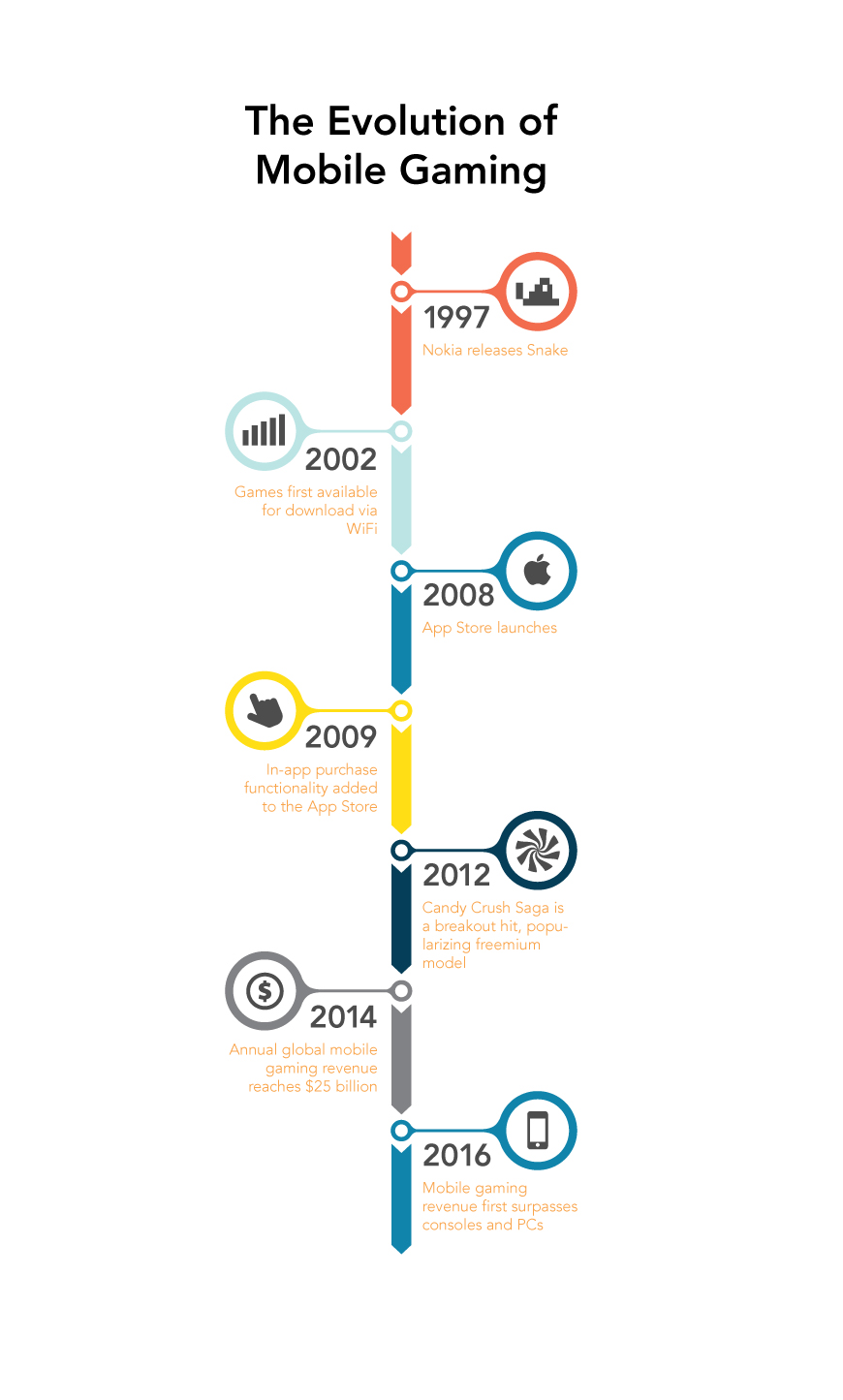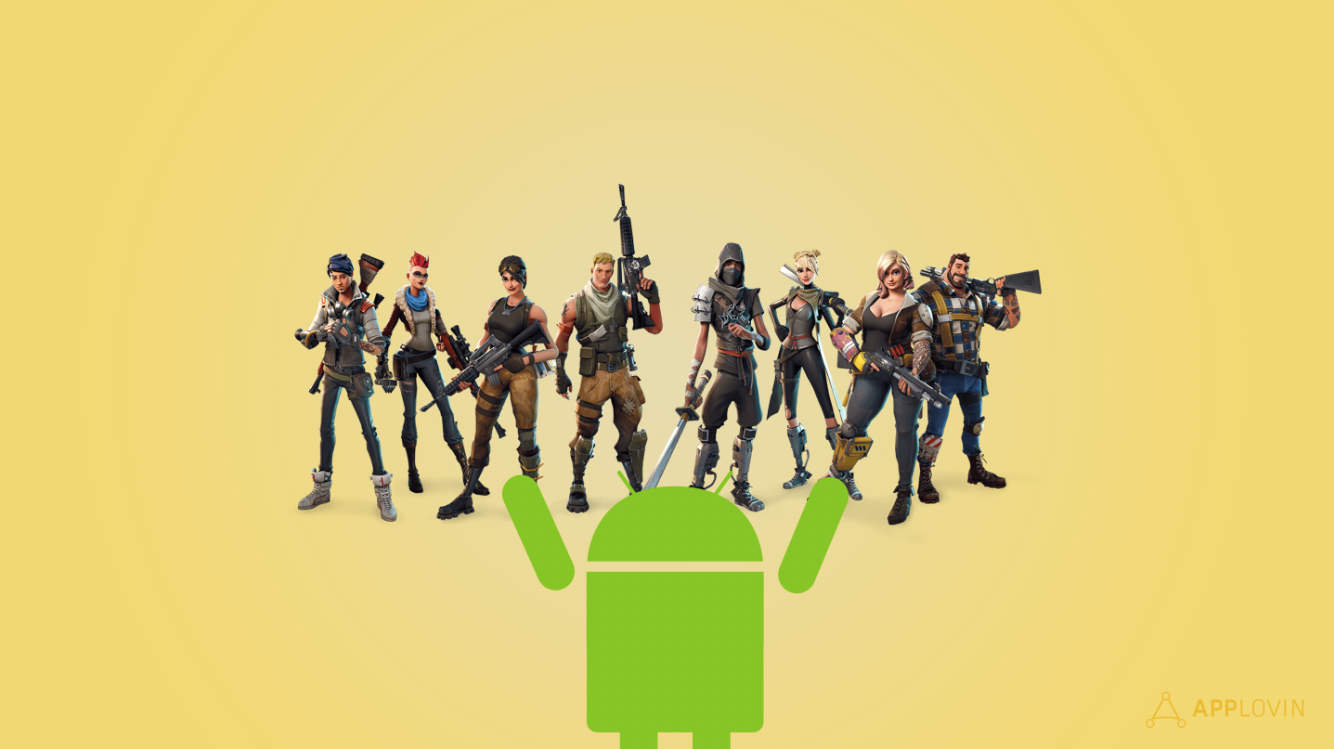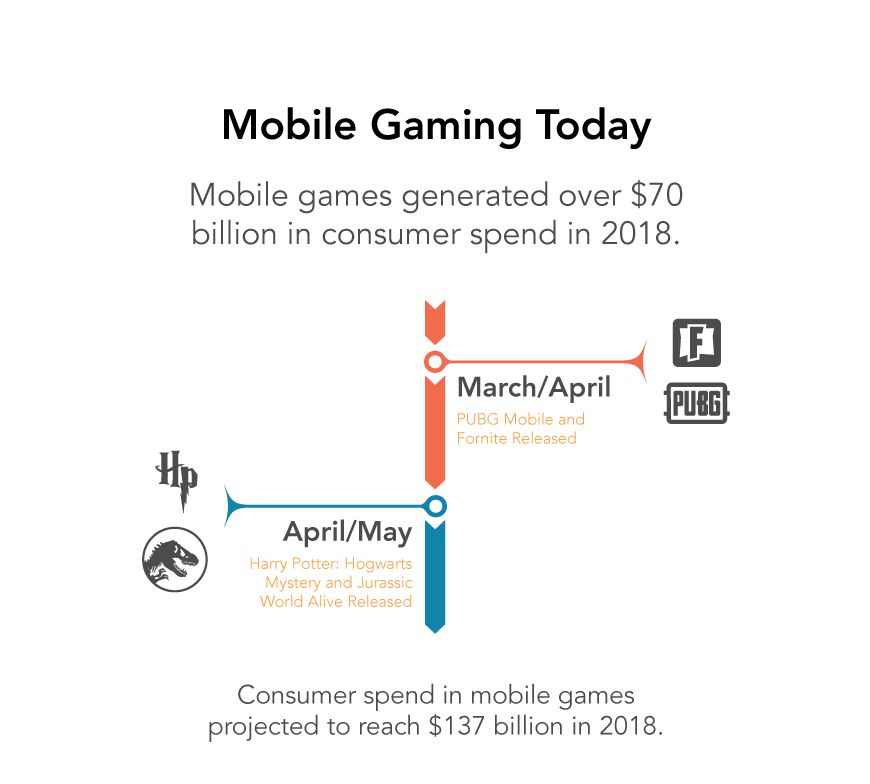Gaming, Industry News & Events, Mobile App Growth
Future of Mobile Gaming: Where we started and where we’re going (Part 1)
Oct 11, 2018

Gaming, Industry News & Events, Mobile App Growth

So if we’ve come that far in two decades, what does that future hold for mobile gaming in even another five years? That’s the question we’ll be answering in our new series, The Future of Mobile Gaming.
“In the last twenty years, mobile gaming has gone from Snake to entire virtual worlds played simultaneously by thousands across the globe…”
Over the coming weeks, we’ll post a series of articles, each focused on a specific aspect of mobile gaming’s future, from hardware changes and the rollout of 5G to the increasing role of emerging tech like AI and VR. By the end, we’ll have painted a picture of the future that developers, publishers, and gaming enthusiasts can use to forecast their own plans.
Before we can begin our journey into the specifics, we need to lay a foundation that covers key stats and milestones in mobile gaming’s past and present, as well as some baseline predictions for the future. After all, you can’t know where you’re going unless you know where you’ve been and where you are.
Mobile Gaming’s Past: 1997-2016
As we mentioned above, while mobile games have technically existed since the earliest cell phones, we’ll begin our story in 1997, when Snake became the first real “hit” mobile game after its inclusion on the Nokia 6110 phone. From there, the infrastructure for mobile gaming was rolled out with the establishment of the Wireless Internet Protocol (Wi-Fi) before the industry took a quantum leap forward with the launch of the iOS App Store in 2007, followed closely by Google’s Android Market (now known as the Google Play Store).

By 2012, smartphone penetration in the US had crossed the 50% benchmark, and we began to get the first reliable data reports about App Store activity. From the outset, it was clear that game publishers would be major players in both app stores, cementing mobile’s consistent place in the gaming universe.
Mobile gaming had gone mainstream, but it wasn’t until 2016 that mobile gaming revenue surpassed consoles and PCs, bringing the industry from infancy to maturity in just shy of 20 years:

Source: Venture Beat | Newzoo
Those are obviously some pretty broad strokes, but they do an effective job of getting us to the present day with a solid foundation under our feet.
And with that, let’s fast forward to the current state of mobile gaming.
Mobile Gaming’s Present: 2017-2018

Although many continued to doubt mobile’s role in the gaming universe even into 2016, 2017 should have been the year any lingering doubts were laid to rest.
Most notably, the rise of battle royale games like Fortnite and PUBG Mobile proved that technology had finally advanced to the point where the mobile gaming experience between console/PC and mobile was seamless, and the rewards for developers were enormous. As of the summer of 2018, Fortnite alone was pulling in well over $100 million a month, and that’s just direct revenue for the publisher.
But while battle royale games rightfully continue to garner big headlines, they’re one story among many in the mobile gaming world. The past year has seen new blockbuster titles like Harry Potter: Wizards Unite and Jurassic World Alive that signal the industry’s revived investment in the AR technology that made Pokémon Go such a breakaway success.

And at the same time, hyper-casual games like Love Balls and Helix Jump grew into giants in their own right by providing easily accessible but highly engaging experiences for players across the world.

Source: App Annie
Mobile gaming is having a banner year in 2018. Mobile games have moved even more deeply into the broader culture than ever before, and there’s every indication that the industry’s just getting started.
Mobile Gaming’s Future: 2018 and beyond
Now that we’ve laid out the road behind us and our current location, it’s time to finally turn our attention toward the future. For this series, we’ll talk about the foreseeable future, as in the next five years. Given the staggering pace of technological advancement, any predictions beyond that time frame would just be too uncertain to be actionable.
With that said, the evolution of data science has made forecasting a more exact science than ever. Pair this with industry expertise and knowledge of major upcoming trends like the rollout of 5G, and the future can be put clearly into focus. That future will be one that sees gaming continuing to catapult off advancements in hardware and networks that, along with other advancements like AI, will offer highly personalized experiences that bring mobile games into every moment of our lives.
Overall, growth in maturing and emerging markets will help drive mobile gaming to even greater heights as games are projected to be the highest category for consumer spend into 2023.
From the first hit game in the ‘90s to a future state where mobile game revenue has significantly surpassed PCs and consoles as the core of the gaming industry, that’s our quick tour through the past, present, and future of mobile gaming.
In the coming weeks, we’ll dive deep into specific areas of focus, and we’ll update this post with links to each as they go live. We hope you join us as we fire up the DeLorean and push into the future, so stay tuned for the following topics: